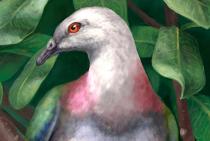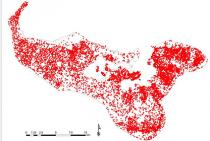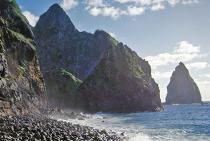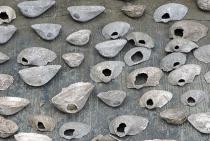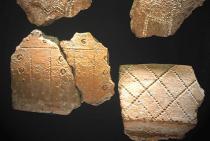A large fruit-eating bird from Tonga joins the dodo in the line-up of giant island pigeons hunted to extinction. New research into fossils shows that ‘Tongoenas burleyi’, a newly described genus and species, inhabited the Pacific islands for at least 60,000 years, but vanished within a century or two of human arrival around 2,850 years ago. The size of a large duck, ‘T. burleyi’ was likely capable of swallowing fruit as big as a tennis ball, said study lead author David Steadman.
You are here
Results for David Burley
Friday 24 July 2020
Gainesville-Florida, USA
Saturday 27 June 2020
Nuku'alofa, Tonga
Burial mounds are widely scattered across the Tongatapu landscape. When you land at Fua’amotu airport, they line the runway. When you drive into Nuku’alofa, they can be seen to either side of the road. All but a few are without name, and the individuals buried within are long lost to history. Yet these mounds represent a story that literally is inscribed on the landscape. Using airborne LiDAR data, a computer application was developed to count the mounds. The total was astounding, including upwards of 10,000 of these sites on Tongatapu - about 40 mounds for every square kilometre. By Travis Freeland and David V. Burley.
Thursday 16 April 2020
2 comments
Nuku'alofa, Tonga
‘Ata, Tonga’s southernmost island, is a long way away, separated from Tongatapu by 160 km of open ocean. ‘Ata’s place in the history books is well established. It was here, in June 1863, that the whaling ship Grecian under Captain Thomas McGrath anchored off the northeastern shore and only village, Kolomaile. The details of the events that followed are sketchily recorded, but the consequence is notorious. A large number of ‘Ata’s residents were lured on to the ship, captured, and then sold to a Peruvian slaver for transport to Lima. None were to return. In the aftermath of the raid, and under the orders of Tupou I, the remaining ‘Atans were resettled on ‘Eua, in a village they again named Kolomaile. By David V. Burley.
Thursday 19 March 2020
Nuku'alofa, Tonga
Tonga's stunning ngatu provide testimony to the considerable antiquity of Tongan artistic designs. Variation of the ngatu patterns, and the way these are organized, had been inscribed on the surfaces of Lapita pottery in Tonga almost 3,000 years ago. By David V. Burley.
Thursday 2 January 2020
Nuku'alofa, Tonga
There are rare moments on an archaeological project which offer extraordinary insight into the past or when the past connects with the present in an utterly astonishing way. Both occurred in late July of 2007, as we were carrying out archaeological excavations in the village of Nukuleka at the northeast entrance to Fanga ‘Uta Lagoon on Tongatapu. This story is about the documentation of a shell game, taupita, but a shell game, as we found out, with an almost 3000-year-old history. It also is a story that binds Tonga’s earliest Lapita ancestors to the people of Nukuleka today. By David Burley and Sean Connaughton.
Monday 16 December 2019
Nuku'alofa, Tonga
Tongatapu was a far different place 3000 years ago, one few of us can imagine today. The sea was higher, almost 1.4 m higher. Much of the land on which the city of Nuku‘alofa now sits was not land at all. It was about 900 BC when voyaging canoes first arrived from a homeland to the west. These kalia carried a small group of people and all of the necessities they would need to settle new found islands. They were the first Tongans. By David Burley


